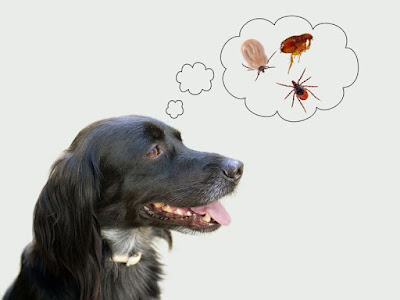What is Canine Distemper in Dogs?

Canine distemper is an often show up in dogs which is a contagious and a serious illness. This harmful disease is a result of a virus that attacks the respiratory, gastrointestinal and nervous systems of puppies and dogs. More lethal to unvaccinated pups and dogs, it is spread by various means of direct contact with infected dog’s saliva, urine or feces and when the infected dog sneeze and coughs, the virus is transmitted. The virus can also be passed by sharing food and water dishes between affected and healthy dogs.
A virus called as Morbillivirus causes canine distemper. It is similar to the virus that of measles and is referred to as Canine Distemper Virus (CDV). This virus is threat for all dogs but especially for puppies that are younger than 4 months and the dogs who have not yet been vaccinated to prevent CDV. Wild animals like foxes, wolves, raccoons, ferrets and minks are also target species of distemper virus and gets effected by it. This indicates that whenever any wildlife species is infected with the virus, you should protect your dog and not let any contact with any local species.
How will you know that your dog is suffering from a fatal contagious disease? The common signs and symptoms that are shown by most of the affected dogs are:

Signs And Symptoms Dog Distemper
- Fever
- Coughing
- Sneezing
- Vomiting
- Diarrhea
- Intolerance towards food consumption
- Weight loss
- Lethargy
- Eye and nasal discharge
- Muscle twitches
- Convulsions
- Seizures
How To Prevent Distemper in Dogs And What To Do For Treatment
Such kind of visible signs will be a hint to you that something is fishy with your pooch and in such cases, take him to a vet. If you are aware of this viral disease then take the proper measures to prevent it from attacking your pooch. Better to prevent your pooch from such a fatal outbreak and take preventive measures to help you. Certain prevention techniques that may be helpful for you are:

- Timely vaccination starting at an age of 6-8 weeks
- Repeat vaccines after every 3-4 weeks until the dog in 16 weeks of age
- Follow the vaccination protocols told by the vet
- Keep up to date with the new vaccines and treatments in the market for CDV
- Do not let your dog near areas where other dogs status of vaccination is not known
- Keep your dogs at a safe distance from other pooches while on a walk or playing in the park
Since the virus-borne disease is a bit hard to diagnose in dogs, still a regular visit to the vet for checkups might be helpful to prevent Canine Distemper from disrupting your dog’s life.


































